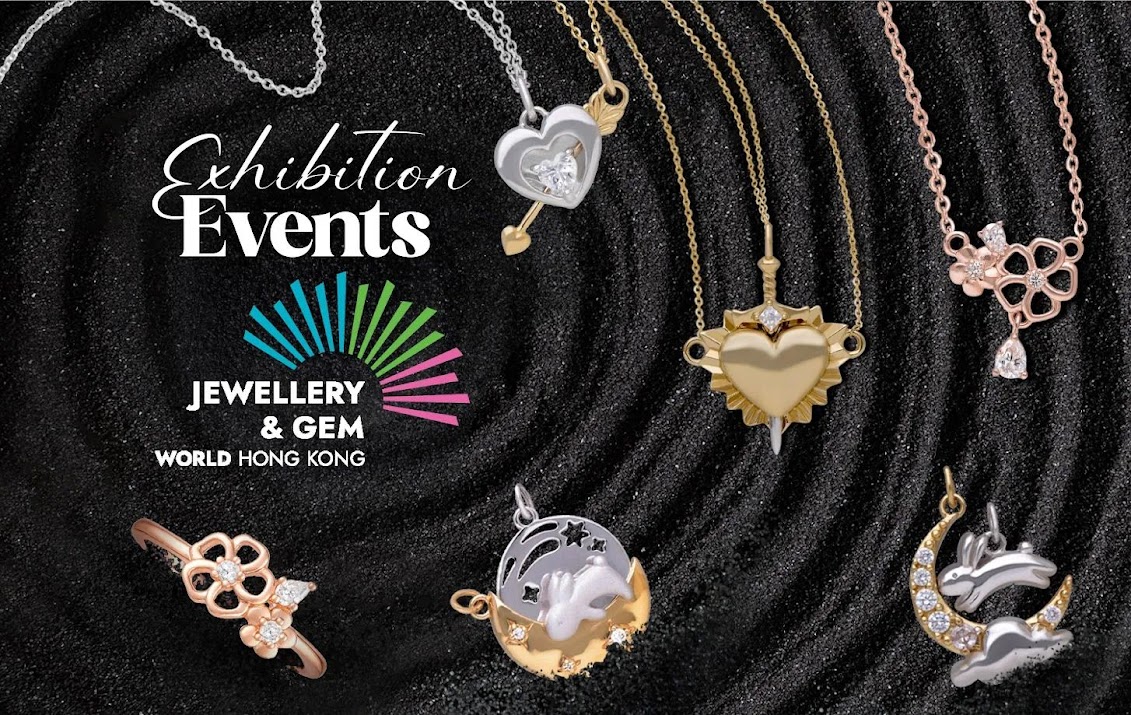The jewelry industry is undergoing a significant transformation as consumers become increasingly aware of the environmental and ethical implications of their purchasing choices. Sustainable jewelry, made from ethically sourced materials and produced using environmentally friendly practices, is gaining popularity and driving change within the industry.
Lab-grown gemstones and biodegradable materials are two key elements that are shaping the future of sustainable jewelry. Lab-grown gemstones offer a more ethical and sustainable alternative to natural gemstones, while biodegradable materials provide a solution for creating jewelry that has a minimal environmental impact.
By embracing sustainable practices, the jewelry industry can contribute to a more responsible and sustainable future. This article will explore the benefits of lab-grown gemstones and biodegradable materials, as well as the potential for these innovations to drive the future of sustainable jewelry.
The Rise of Lab-Grown Gemstones
Lab-grown gemstones are created in a controlled laboratory environment using advanced technologies that mimic the natural conditions under which natural gemstones form. Two primary methods are used:
– High Pressure High Temperature (HPHT): This method involves subjecting carbon to extreme pressure and temperature, similar to the conditions found deep within the Earth. Carbon atoms are compressed and heated to form a diamond crystal structure, replicating the natural process.
– Chemical Vapor Deposition (CVD): This method involves depositing carbon atoms layer by layer onto a seed crystal in a controlled chamber. A plasma is created using a gas mixture, and carbon atoms from the gas are deposited onto the seed crystal, gradually forming a diamond crystal.
The advantages of lab-grown gemstones over natural gemstones
Lab-grown gemstones offer several advantages over their natural counterparts:
- Ethical sourcing: Lab-grown gemstones are produced in a controlled environment, eliminating the ethical concerns associated with mining natural gemstones, such as conflict diamonds and child labor.
- Environmental impact: Lab-grown gemstones have a significantly lower environmental impact compared to natural gemstones. The production process requires less energy and does not involve the destruction of natural habitats.
- Affordability: Lab-grown gemstones are generally more affordable than natural gemstones, making them accessible to a wider range of consumers. This is because the production process is more efficient and does not involve the costs associated with mining and distribution.
- Consistency and quality: Lab-grown gemstones can be produced with a high degree of consistency and quality, as the growing conditions can be carefully controlled. This means that lab-grown gemstones often have fewer inclusions and impurities than natural gemstones, resulting in a more flawless appearance.
- Customization: Lab-grown gemstones can be customized to specific specifications, such as color, size, and clarity. This allows for the creation of unique and personalized jewelry pieces.
The growing acceptance of lab-grown gemstones in the jewelry market
Consumers are becoming increasingly aware of the ethical and environmental benefits of lab-grown gemstones. As a result, there has been a growing acceptance and demand for lab-grown jewelry in the market. Many jewelry retailers and designers are now offering lab-grown gemstones as a sustainable and affordable alternative to natural gemstones.
In addition to their ethical and environmental advantages, lab-grown gemstones also offer consumers a wider range of options. Lab-grown gemstones can be produced in a variety of colors and sizes, allowing for more creative and unique jewelry designs. Furthermore, lab-grown gemstones can be more affordable than natural gemstones, making them accessible to a wider range of consumers.
The growing acceptance of lab-grown gemstones is a testament to the increasing awareness of sustainability and ethical practices in the jewelry industry. As consumers continue to seek out jewelry that aligns with their values, lab-grown gemstones are poised to become a mainstream choice.
Biodegradable Materials in Jewelry
The concept of biodegradable jewelry
Biodegradable jewelry is made from materials that decompose naturally over time, reducing their environmental impact. These materials are often derived from renewable resources and break down into harmless substances that can be absorbed by the environment. This approach offers a sustainable alternative to traditional jewelry made from non-renewable materials.
Examples of biodegradable materials used in jewelry
– Recycled metals: Recycled metals, such as recycled gold, silver, and platinum, are an excellent choice for creating sustainable jewelry. By using recycled materials, you can reduce the demand for newly mined metals and minimize the environmental impact of the jewelry production process.
– Biodegradable plastics: Some biodegradable plastics are made from renewable resources like cornstarch or plant-based oils. These materials can be used to create jewelry components such as beads, clasps, or even entire pieces. While biodegradable plastics offer a sustainable alternative to traditional plastics, it’s important to ensure they are certified compostable and can break down in the appropriate conditions.
– Natural fibers: Natural fibers like wood, bamboo, and coconut shells can be used to create unique and sustainable jewelry pieces. These materials offer a natural and organic aesthetic, and they can be combined with recycled metals or other biodegradable components to create a truly sustainable piece.
The benefits of biodegradable jewelry
– Environmental sustainability: Biodegradable jewelry reduces waste and pollution by decomposing naturally, minimizing its environmental impact. This is a significant advantage compared to traditional jewelry made from non-renewable materials that can persist in the environment for centuries.
– Ethical sourcing: By using recycled materials and natural fibers, biodegradable jewelry can contribute to ethical and sustainable sourcing practices. This means supporting responsible mining and production methods, and avoiding materials that may be associated with human rights abuses or environmental harm.
– Biodegradability: The most significant benefit of biodegradable jewelry is its ability to decompose naturally. This means that when the jewelry reaches the end of its useful life, it can be disposed of without harming the environment. Biodegradable materials break down into harmless substances that can be absorbed by the soil, reducing the need for landfill waste.
By choosing biodegradable jewelry, you can make a positive impact on the environment and support sustainable practices in the jewelry industry. Additionally, biodegradable jewelry can offer a unique and stylish alternative to traditional jewelry, appealing to consumers who are looking for sustainable and ethical options.
Combining Lab-Grown Gemstones and Biodegradable Materials
Creating sustainable and ethical jewelry pieces
Combining lab-grown gemstones and biodegradable materials offers a unique opportunity to create sustainable and ethical jewelry pieces. By incorporating both elements, you can create jewelry that is not only beautiful but also environmentally friendly and socially responsible.
When designing jewelry that combines lab-grown gemstones and biodegradable materials, it is important to consider the following factors:
– Compatibility: Ensure that the materials are compatible with each other and can be combined without compromising the integrity of the piece.
– Durability: Consider the durability of the materials and how they will withstand everyday wear and tear.
– Aesthetics: The materials should complement each other and create a visually appealing and harmonious design.
By carefully considering these factors, you can create sustainable jewelry pieces that are both beautiful and ethical.
Challenges and opportunities in combining lab-grown gemstones and biodegradable materials
While combining lab-grown gemstones and biodegradable materials offers many benefits, it also presents some challenges:
– Availability of materials: There may be limitations in terms of the availability of high-quality biodegradable materials and lab-grown gemstones.
– Production processes: Developing efficient and cost-effective production processes for combining these materials can be challenging.
– Consumer acceptance: Raising awareness and acceptance of sustainable jewelry among consumers may require education and marketing efforts.
However, the challenges also present significant opportunities. By overcoming these challenges, you can create innovative and sustainable jewelry pieces that stand out in the market. Additionally, the growing demand for ethical and sustainable products presents a significant opportunity for businesses that offer sustainable jewelry options.
By combining lab-grown gemstones and biodegradable materials, you can create jewelry that is not only beautiful but also aligns with the values of conscious consumers. This approach can help to drive the transition towards a more sustainable and ethical jewelry industry.
The Future of Sustainable Jewelry
Emerging trends and innovations in sustainable jewelry
The field of sustainable jewelry is constantly evolving, with new trends and innovations emerging all the time. Some of the latest developments include:
– Recycled precious metals: The use of recycled precious metals, such as recycled gold and silver, is becoming increasingly popular as a way to reduce the environmental impact of jewelry production.
– Lab-grown diamonds and gemstones: As discussed earlier, lab-grown diamonds and gemstones offer a sustainable alternative to natural stones.
– 3D printing: 3D printing technology is being used to create customized and sustainable jewelry designs.
– Biodegradable materials: The use of biodegradable materials, such as recycled plastics and natural fibers, is growing in popularity.
The role of technology in driving sustainability
Technology plays a crucial role in driving sustainability in the jewelry industry. For example, blockchain technology can be used to track the journey of gemstones from mine to market, ensuring ethical sourcing and transparency. Additionally, advanced manufacturing techniques can be used to reduce waste and improve efficiency in the production process.
Consumer awareness and demand for sustainable jewelry
Consumers are becoming increasingly aware of the importance of sustainability and ethical practices. This has led to a growing demand for sustainable jewelry, which is driving innovation and change in the industry. As consumers continue to seek out ethical and sustainable products, the future of sustainable jewelry looks promising.
By staying informed about emerging trends and innovations, and by embracing technology, the jewelry industry can continue to evolve towards a more sustainable and ethical future.
The Impact of Sustainable Jewelry on the Industry
Ethical and environmental benefits
Sustainable jewelry has a significant positive impact on both the environment and society. By choosing sustainable materials, ethical sourcing practices, and responsible production methods, the jewelry industry can:
– Reduce environmental impact: Minimize the use of harmful chemicals and reduce waste.
– Protect human rights: Ensure fair labor practices and support workers’ rights.
– Support local communities: Contribute to economic development and improve living conditions in mining communities.
Economic opportunities for sustainable jewelry businesses
The growing demand for sustainable jewelry presents significant economic opportunities for businesses. By offering ethical and sustainable products, jewelry businesses can attract a growing customer base and differentiate themselves from competitors. This can lead to increased sales, brand loyalty, and long-term success.
The future of the jewelry industry
The future of the jewelry industry is increasingly tied to sustainability. As consumers become more aware of the ethical and environmental implications of their purchases, there is a growing demand for sustainable jewelry. By embracing sustainable practices, the jewelry industry can not only contribute to a better planet but also ensure its long-term viability and growth.
The future of sustainable jewelry is bright. As consumers continue to prioritize ethical and sustainable choices, the demand for sustainable jewelry is expected to grow. By embracing sustainability, the jewelry industry can create a more positive and sustainable future for both businesses and consumers.
Conclusion: Embracing Sustainability in the Jewelry Industry with Royi Sal
As a leading manufacturer of exquisite jewelry, Royi Sal Jewelry is committed to providing sustainable and ethically sourced options for our valued customers. We are excited to be at the forefront of this movement, offering lab-grown diamonds that reflect our commitment to excellence, sustainability, and ethical responsibility.
Join us in creating a more sustainable future for the jewelry industry. Explore our collection and experience the beauty and ethical integrity of Royi Sal Jewelry. Visit our website to learn more and discover the perfect pieces to adorn your journey towards a more sustainable world.
We’re here to help you find the perfect piece that celebrates love, beauty, and a brighter future for our planet. Contact us at sales@royisal.com to explore how Royi Sal can help your business thrive with eco-friendly and high-quality solutions.
Share this post









Responses (0)